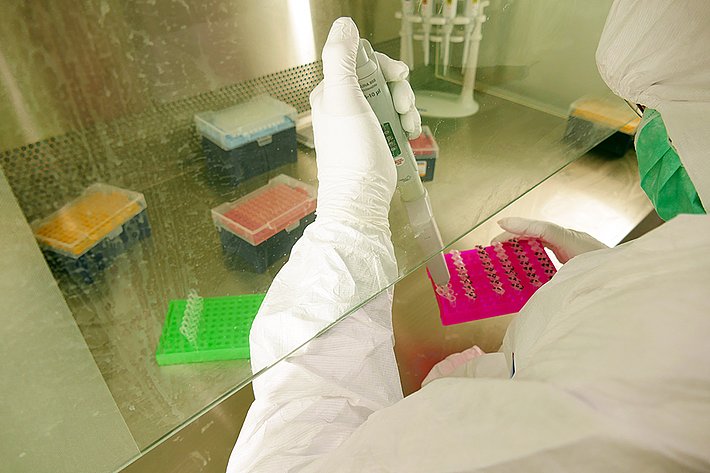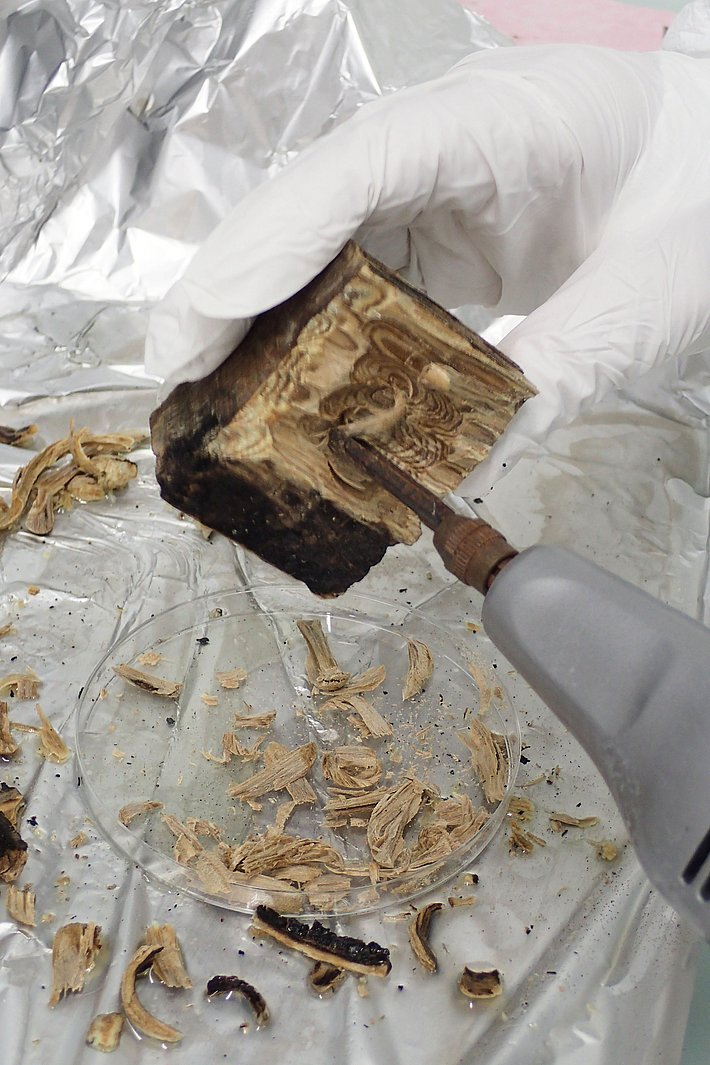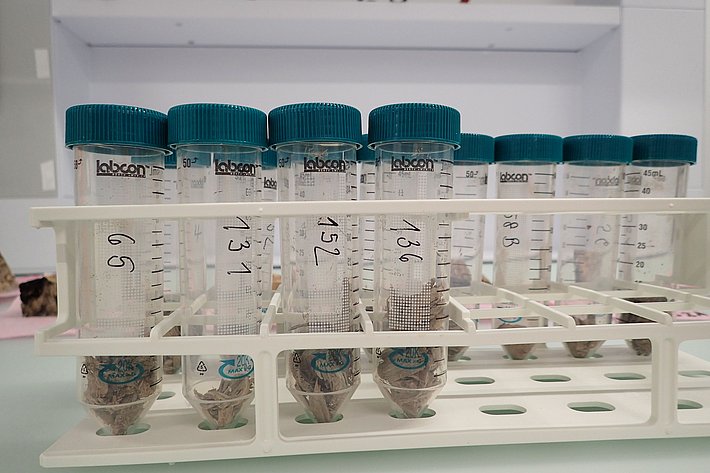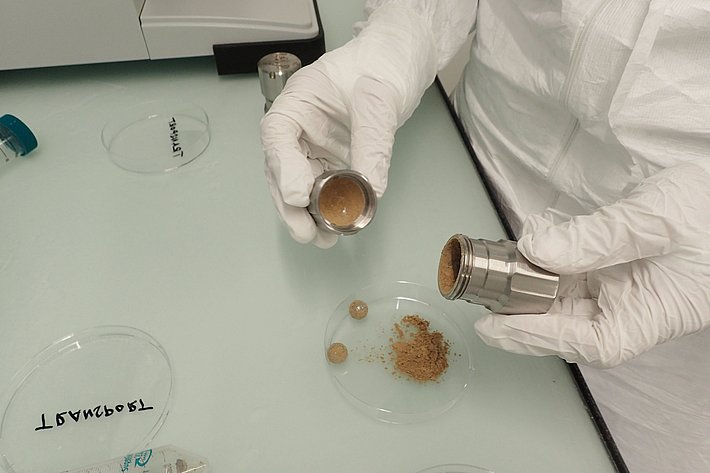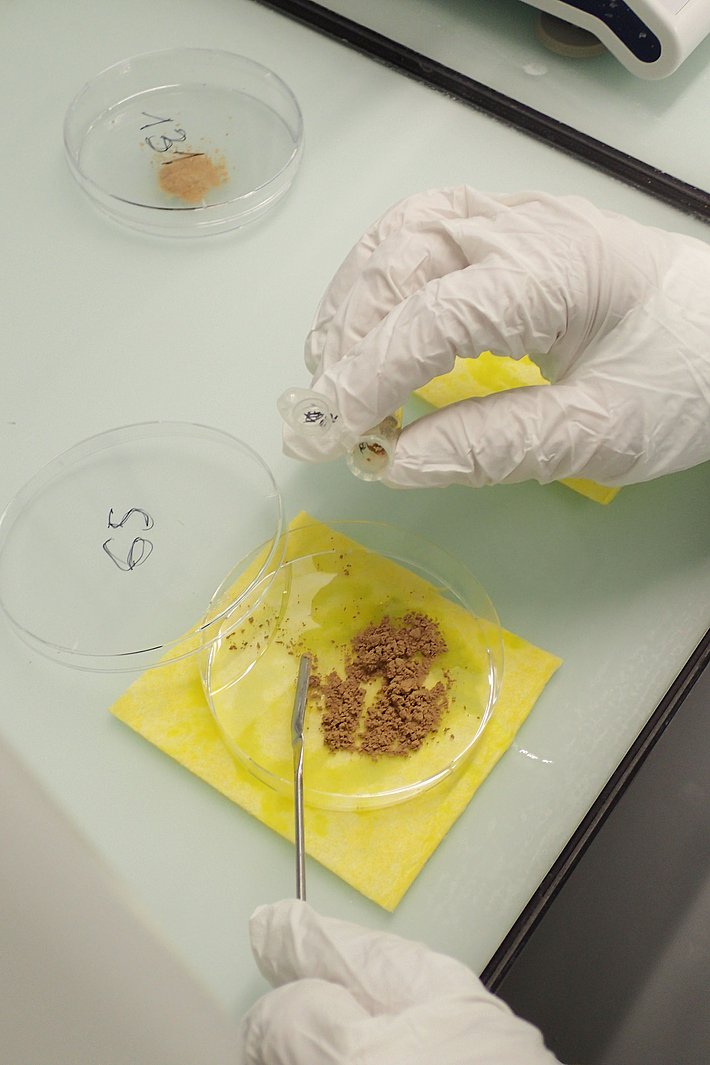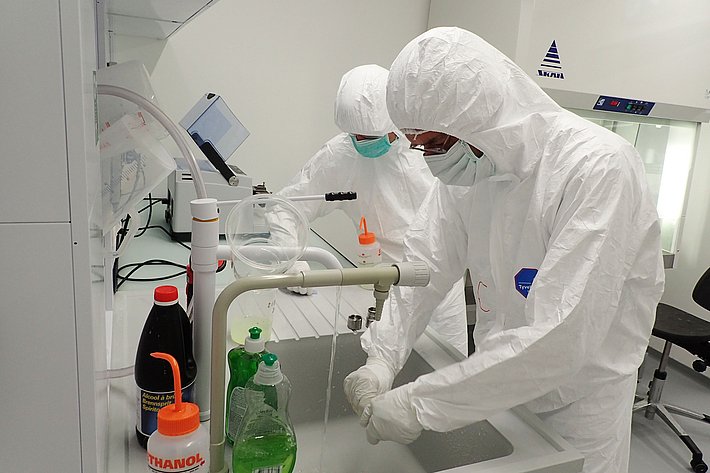The history of past populations can be reconstructed using genetic material from the remains of prehistoric flora and fauna. This genetic material is usually present in minute quantities only, and the risk of contamination is high. This is why a clean room laboratory – such as the one present on-site at the WSL since 2015 – is required for the analytical work.
DNA can survive in the remains of dead organisms for a very long time. In favourable conditions, this may even stretch to several millennia, though it is likely the remains will be damaged and broken into tiny fragments. Today, we have effective methods for concentrating and multiplying ancient DNA (aDNA) and making it suitable for analysis. The sequence of the DNA building blocks of former genes allows for a direct view into the genetic history of past populations.
Ancient DNA can be used to reconstruct the migratory history of species after the last ice age, detect populations, and study adaptive processes against the backdrop of past environmental changes.
The aDNA laboratory at the WSL ¶
Our clean room laboratory is fitted with air filters and is overpressurised to prevent foreign particles from entering the laboratory from outside. We conduct the various steps of a typical aDNA analysis in separate rooms in order to eliminate impurities to the greatest extent possible. The WSL's aDNA laboratory is the largest of its kind in Switzerland and the only one in which plants are studied.
Learning from the past for the benefit of the future ¶
Our current studies focus on sub-fossilized tree remnants, which we use to reconstruct the population and evolutionary histories of forest tree species in the Alpine region. Have past climate changes led to a change in the genetic composition of trees? To what extent have human influences affected the genetic diversity of populations? To answer questions such as these, we work with sub-fossilised needles made of sea sediments and sub-fossilised wood. The findings of these studies will ultimately help us to assess the consequences of climate change on today's forests.
* Subfossil = any prehistoric organism which has not fossilised or has only partially fossilised. Unlike fossils, subfossils can be dated using the C14 method.
